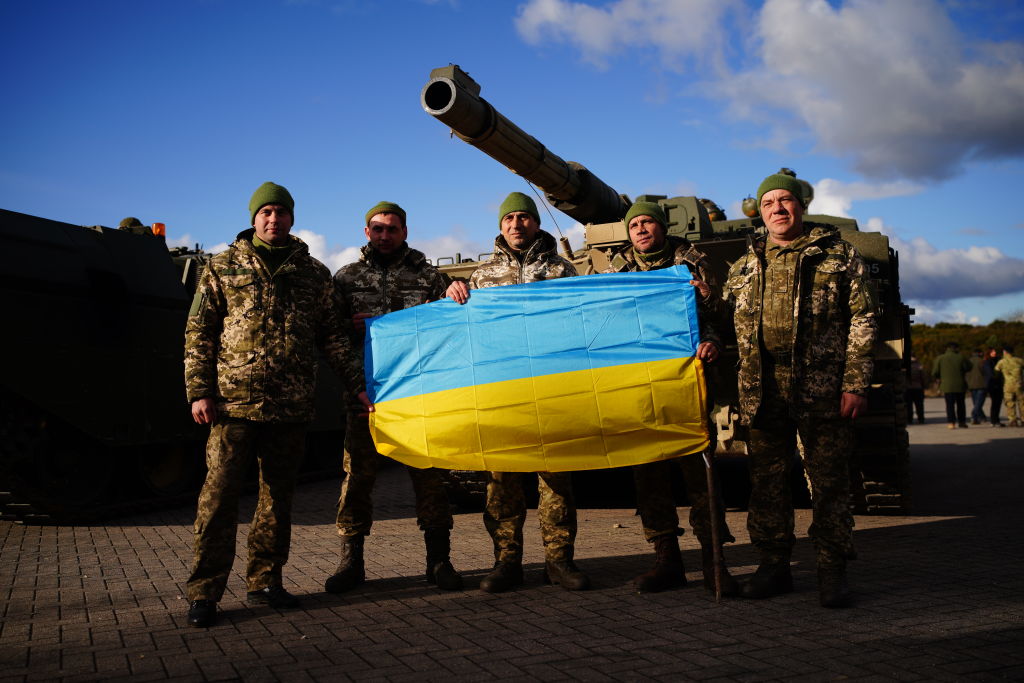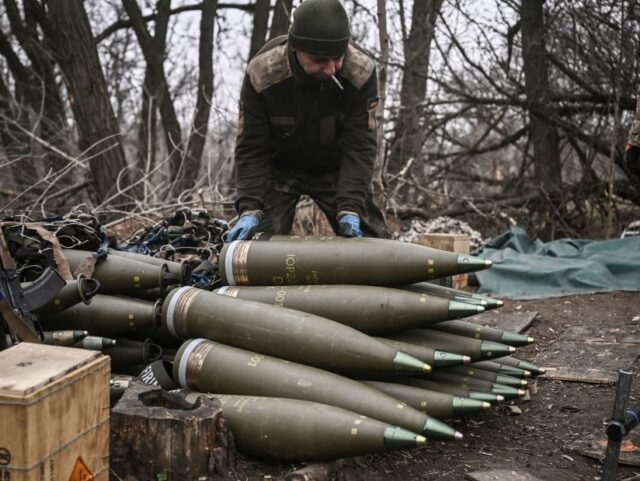The EU is sending one million artillery shells to Ukraine at the eye-watering price of two billion Euros, meanwhile the United Kingdom has confirmed it would be sending depleted uranium anti-tank rounds along with the main battle tanks it is donating to the country.
A long-anticipated arms procurement deal by EU members-plus-Norway through the European Defence Agency to procure and send one million 155mm artillery rounds [pictured, above] to Ukraine has been agreed, ending months of discussion.
The €2 billion ($2.15 billion) price tag will be divided in two tranches, the EU said, with the first billion used to compensate European Union nations for releasing shells from their own military stocks, with an aim to send these within two months. The second round of funding will be paid to armaments factories in European nations to make new shells for shipment.
The EU’s ambition is to have this delivery completed within 12 months, but there are questions over whether Europe’s armaments factories can ramp up production quickly enough to meet that target. Extra shells could have been bought from outside the European Union, but France has insisted on a buy-European policy to protect European industry.
Josep Borrell, the EU’s federal foreign minister, said the deal was “historic” and said it demonstrated the union was backing Ukraine.
The massive donation of weapons comes as, but is separate to, a further payment of €1.5 billion ($1.6 billion) to Ukraine by the European Union in “macro-finanical assistance”, in other words, monetary support to help keep the Ukrainian government from going bankrupt. President Ursula von der Leyen said the money was to help Ukraine transition to becoming more “European” and like Borrell said it was a sign of Europe’s support for their neighbour.
Yet the wind was taken out of the sails of the EU’s massive arms procurement deal after it was announced, with the revelation by the United Kingdom that the gift of Challenger 2 Main Battle Tanks to Ukraine would be accompanied by the special rounds which use extremely dense depleted uranium. The special material qualities of depleted uranium at the point of impact make it an exceptional metal for tank-busting.
Russia’s anger at Britain’s tank-busting gift
A UK government spokesman said of the gifting of armour and concomitant ammunition: “Alongside our granting of a squadron of Challenger 2 main battle tanks to Ukraine, we will be providing ammunition including armor piercing rounds which contain depleted uranium. Such rounds are highly effective in defeating modern tanks and armored vehicles.”
Russia immediate reacted with anger to the revelation, with President Vladimir Putin speaking out after a meeting with China’s Xi Jinping, who arrived in Moscow for a state visit on Monday, to threaten retaliation. He is reported to have said: “If all this happens, Russian will have to respond accordingly, I’m talking about the fact the west is already beginning to use weapons with a nuclear component.”

BOVINGTON, DORSET – FEBRUARY 22: Ukrainian soldiers pose with a Ukrainian flag next to a Challenger 2 at Bovington Camp on February 22, 2023 (Photo by Ben Birchall – Pool/Getty Images)
That conflation of depleted uranium rounds to the phrase “nuclear component” has been in turn criticised in the UK, which says Russia is trying to give a false impression that NATO is sending nuclear weapons to Ukraine. Users of depleted uranium rounds in combat — primarily the United States and the United Kingdom — insist they are safe and do not present a radiation threat in use or afterwards.
American M1 Abrams tanks even use depleted uranium in their armour, the same qualities of the super-dense metal making it good for protection as well as penetration.
Others, on the other hand, have long criticised NATO for using depleted uranium rounds in combat, and one of the most vocal of them has traditionally been Russia. Echoing those past complaints, the Russian Defense Minister Sergey Shoigu cited the use of depleted uranium in Kosovo and Serbia in the 1990s, he said: “There were consequences. There were consequences for the health of those who used those munitions. There were serious health conditions, and they were studied. However, they did not examine what kind of effect the munitions had on those against whom they were used.”
The Russian embassy in London is said to have told the British government that “this step is fraught with risks of further escalation of the conflict. Radioactivity, high toxicity and carcinogenicity of such weapons are well-known”.
High cost for EU’s shell-procurement
The 155mm artillery shell now being financed for Ukraine by the European Union is, essentially, a universal NATO round usable in several different gun models employed by dozens of countries worldwide. There are a number of companies which make the shell including BAE Systems, General Dynamics, Northrop Grumman, and Rheinmetall in NATO. They are also made in China, India, and Russia. General Dynamics, who make 11,000 shells a month in Scranton, Pennsylvania, describes the 155mm as a “low cost munition for general Harassment and Interdiction (H&I) fire missions”.
“Low cost” or not, the price paid by the European Union consortium for an order of one million 155mm artillery shells underlines the sudden jump in prices for military materiel the ammunition-hungry Ukraine war has caused. For a piece of legacy technology that hasn’t appreciably changed in decades — and came in at just $150 a piece in the 1980s — ‘dumb’ 155mm artillery shells were already expensive before the war began at around $2,000 each. Today, as the EU deal shows, that price has doubled to $4,000.
That price can be considerably higher for guided artillery shells, which are launched from a gun in the conventional way but use vanes or jets with precision GPS to finesse the final landing point in-flight. Such shells can be tens or hundreds of thousands of dollars per shot, but are still considerably cheaper than guided missiles which can cost millions of dollars each.

COMMENTS
Please let us know if you're having issues with commenting.